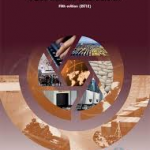
The 2024 Combined Nomenclature is published as European Commission Implementing Regulation No 2023/2364 of 26 September 2023.
The Combined Nomenclature – European commission
The basic regulation is Council Regulation (EEC) No 2658/87 on the tariff and statistical nomenclature and on the Common Customs Tariff. An updated version of the Annex I to the Combined Nomenclature Regulation is published as a Commission Regulation every year in the L-series of the Official Journal of the European Communities (as well as on CD-ROM). Such updates take into account any changes that have been agreed at international level, either at the World Customs Organisation with regard to the nomenclature at HS level or within the framework of the WTO with regard to conventional rates of duty. Other changes may be required to reflect the evolution of, for example, commercial policy, technology or statistical requirements.








 Including:
Including: Including:
Including: Including:
Including:
 The Union Customs Code was published in
The Union Customs Code was published in  REACH Chemical Regulation Registration, Evaluation, Authorisation and Restriction.
REACH Chemical Regulation Registration, Evaluation, Authorisation and Restriction. Following the end of the 2022 review of the HS, many classification codes changed with effect from I January 2023. The classification codes used for Intrastat reporting and customs clearance at import and export may be impacted. We suggest you check the following:
Following the end of the 2022 review of the HS, many classification codes changed with effect from I January 2023. The classification codes used for Intrastat reporting and customs clearance at import and export may be impacted. We suggest you check the following: